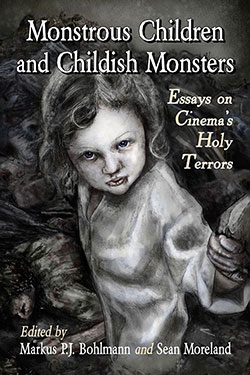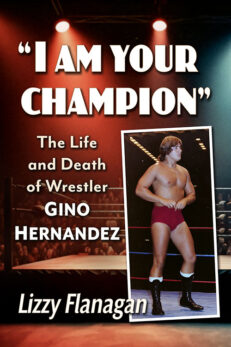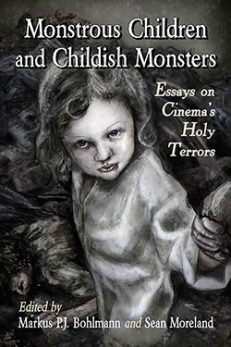Monstrous Children and Childish Monsters
Essays on Cinema’s Holy Terrors
$29.95
In stock
About the Book
Perhaps because of the wisdom received from our Romantic forbears about the purity of the child, depictions of children as monsters have held a tremendous fascination for film audiences for decades. Numerous social factors have influenced the popularity and longevity of the monster-child trope but its appeal is also rooted in the dual concepts of the child-like (innocent, angelic) and the childish (selfish, mischievous). This collection of fresh essays discusses the representation of monstrous children in popular cinema since the 1950s, with a focus on the relationship between monstrosity and “childness,” a term whose implications the contributors explore.
About the Author(s)
Bibliographic Details
Edited by Markus P.J. Bohlmann and Sean Moreland
Forewords by Steven Bruhm and James R. Kincaid
Afterwords by Kathryn Bond Stockton and Harry M. Benshoff
Format: softcover (6 x 9)
Pages: 288
Bibliographic Info: 8 photos, notes, index
Copyright Date: 2015
pISBN: 978-0-7864-9479-8
eISBN: 978-1-4766-1986-6
Imprint: McFarland
Table of Contents
Acknowledgments v
Foreword Steven Bruhm 1
Foreword: Sweet Demons—And Us James R. Kincaid 7
Introduction: Holy Terrors and Other Musings on Monstrous-Childness (Markus P.J. Bohlmann and Sean Moreland) 9
Part I. Look Who’s Stalking
Monstrous Newborns and the Mothers Who Love Them: Critiques of Intensive Mothering in Twenty-First-Century Horror Films (Karen J. Renner) 27
“She needs more”: The Villainization of Infertile Women in Horror Films (Brooke W. Edge) 42
When Procreation Becomes Perversion: Zombie Babies (Kristine Larsen) 61
Part II. Frankenstein’s Kindergarten
“My hideous cinematic progeny”: Rosemary’s Baby, Eraserhead and Frankenstein (Sarah Leventer) 79
“Doesn’t everyone want their parents dead?” Monstrous Children in the Films of Ridley Scott (Colin Yeo) 96
Of Radioactive Sprites and Diminutive Tyrants: Hammer’s Monstrous Children (Rebecca A. Brown) 107
Part III. The Adoption Papers (Adaptations)
What About Grendel’s Son? Shades of Monstrosity in Beowulf and Grendel (Danny Gorny) 125
Bringing Out Henry James’s Little Monsters: Two Film Approaches to The Turn of the Screw (Fredrik Tydal) 142
The Monstrous Child: Replacement and Repetition in The Shining (Dustin Freeley) 160
Part IV. Troubled Teens and In-Betweens
Demon Drugs or Demon Children: Take Your Pick (Sharon Packer) 173
Disability and Slasher Cinema’s Unsung “Children” (John Edgar Browning) 177
Monstrous Mammies in Lee Daniels’s Precious (Debbie Olson) 188
Violent Nymphs: Vampire and Vigilante Children in Contemporary Cinema (Lisa Cunningham) 206
Part V. Peek-a-boo: Future Monstrosities and Beyond
“Insects trapped in amber”: The Mutant Child Seer in Contemporary Spanish Horror Film (Jessica Balanzategui) 225
Hanna: The Child as Monster Who Is Supposed to Believe (Tamas Nagypal) 245
Afterword: Monstrously Yours? Kathryn Bond Stockton 261
Afterword Harry M. Benshoff 267
About the Contributors 271
Index 275
Book Reviews & Awards
- “A must read because of its breadth, scholarly approaches, and accessible language”—Albeit Journal
- “A welcome addition to horror film studies”—Journal of the Fantastic in the Arts
- “Instructs, entertains and provokes…exciting and substantial collection…witty and perceptive…rich cinematic detail, provocatively argued theories and solid historical grounding combine to make Bohlmann and Moreland’s substantial collection an inspiring source of reference on the monstrous child. It is crucial reading for scholars of fantasy and horror. A valuable resource on popular culture representations of otherness.”—Anna Powell, Research Fellow, Gothic Studies Centre, Manchester Metropolitan University






